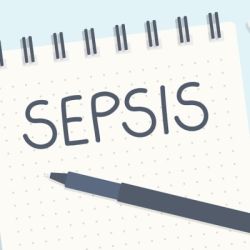Vasopressin is a potent vasopressor used to treat septic shock, acting via a different receptor than catecholamines. Previous randomised control trials have demonstrated its efficacy. However, its use can also lead to adverse effects such as ischaemia events. Therefore, it is recommended as a second-line agent after noradrenaline.
Typically, vasopressin is given as a continuous infusion up to 0.03 U/min (1.8 U/h). However, this method takes time to increase blood pressure due to the need to achieve the minimum effective concentration. In cases of septic shock refractory to noradrenaline, a rapid increase in blood pressure is crucial, and some patients may not respond well to vasopressin, necessitating the use of alternative approaches.
Vasopressin loading is not common due to insufficient evidence of its effects and safety. However, based on previous findings, researchers hypothesised that it could be used to predict the response to vasopressin infusion safely. This study was conducted to examine this hypothesis.
In the study, vasopressin loading was administered to patients with septic shock who received noradrenaline at a rate of ≥ 0.2 μg/kg/min. The loading involved a 1 U bolus of vasopressin followed by a continuous infusion at 1 U/h. Patients were classified as responders and non-responders based on the mean arterial pressure (MAP) changes after vasopressin loading. The primary outcome of the study was the catecholamine index (CAI) change after six hours. Adverse events such as digital ischaemia, mesenteric ischaemia, and myocardial ischaemia during admission were also recorded.
During the study, 92 patients were examined. Sixty-two patients with a MAP change greater than 22 mmHg were categorised as responders, while the others were non-responders. Non-responders had significantly higher blood adrenocorticotropic hormone levels. Before vasopressin loading, responders showed higher stroke volume variations, whereas, after loading, responders had higher stroke volume and dP/dtmax values. The CAI changes were significantly lower in responders compared to non-responders. A total of five ischaemia events were observed, accounting for 5.4% of the cases.
Based on the study's findings, vasopressin loading can be safely utilised for patients with septic shock. It can also serve as a predictive tool to determine the response to continuous vasopressin infusion, aiding in selecting appropriate strategies to effectively increase blood pressure in these patients.
Source: Critical Care
Image Credit: iStock


















